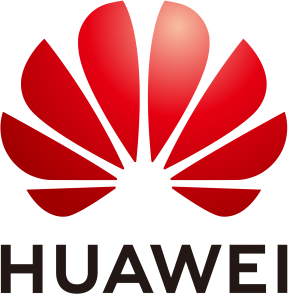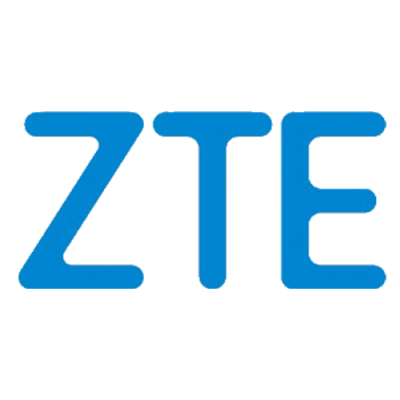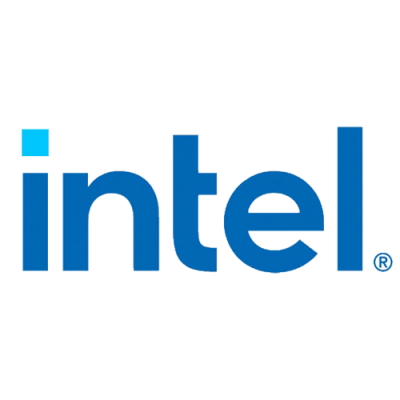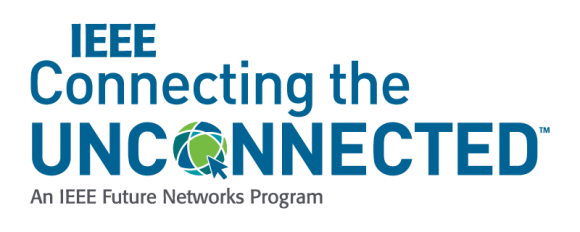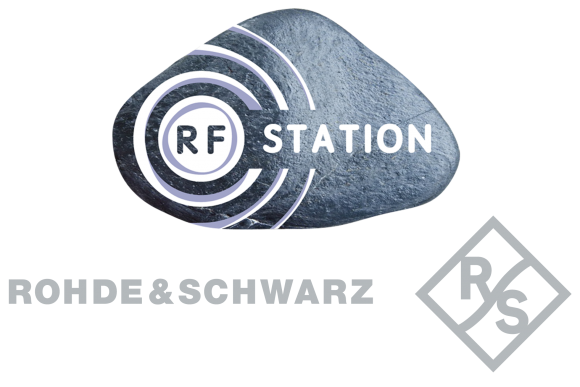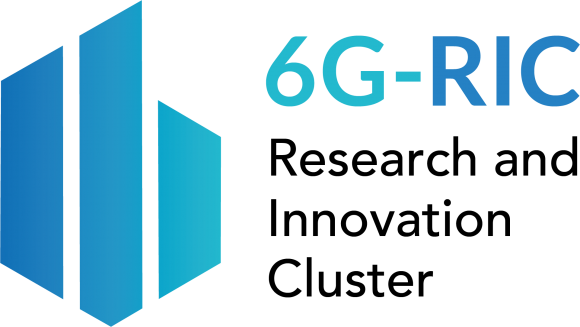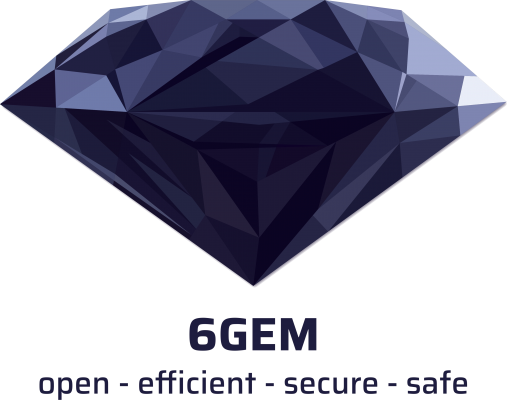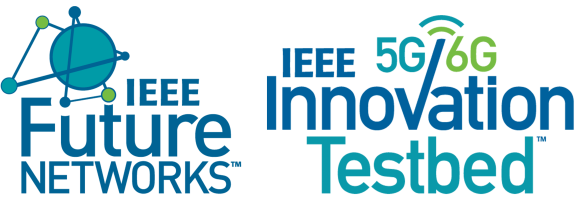- IP 1: IEEE Low-Earth-Orbit (LEO) Satellites & Systems – Engaging Science, Academia and Industry for Space
- IP 2: Prototyping, Testing and Standardization Efforts for Reconfigurable Intelligent Surfaces
- IP 3: 6G & Evolving Edge/Cloud Architecture
- IP 4: Security for Future Networks: A Standardization Perspective
- IP 5: The New Wave of Open RAN
- IP 6: Challenges and New Radio Access Technologies for Integrated Sensing and Communication
IP 1: IEEE Low-Earth-Orbit (LEO) Satellites & Systems – Engaging Science, Academia and Industry for Space
WEDNESDAY, DEC 6 4.00 - 4:30 / LOCATION: Hall 8B
Presenter:
Dr.-Ing. Jan Budroweit, German Aerospace Center (DLR), Bremen, Germany and IEEE Future Direction Project LEO Satellite and Systems
Abstract:
The space sector has evolved rapidly over the past decades. Today, entirely new players, driven by commercial interest and supported by private investors such as SpaceX, Spire or OneWeb are well known to deliver the dominating number of new low Earth orbit (LEO) satellite systems. But not only those well-known big players, also a plethora of small and mid-size enterprises making good business in that new economical field emerged around the globe. This recent commercialization of is commonly referred to as “New Space”. One key aspect of the interest especially in LEO is cheaper access to space, with various developments of reusable and low-cost launches. This comes together with new design & manufacturing paradigms for satellite systems, moving the focus away from the ultra-reliable monolithic integrated large spacecraft to typically much smaller satellites, designed for mass production.
The IEEE Low-Earth-Orbit (LEO) Satellites & Systems (SatS) is a project and upcoming initiative of the IEEE Future Directions Committee (FDC) that focuses on those recent developments. IEEE LEO SatS envisions to consolidate various distributed satellite activities around the globe and provides a focus on technology, science, education and awareness. Primary goal is to increase cooperation in LEO Satellite and Systems between professionals in academia, industry and government
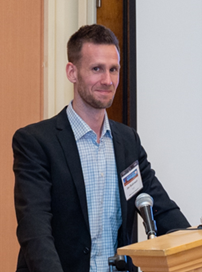 Biography:
Biography:
Dr. Jan Budroweit is the team lead on Radiation Effects in Space Systems at the Institute of Space Systems, German Aerospace Center (DLR). Dr. Budroweit is an active IEEE (Senior) Member, serving the MTT-S and NPSS Societies by contribution to technical committee (e.g. MTT-S TC-29 Microwave Aerospace Systems), conferences and the IEEE Future Direction (IEEE LEO SatS) as publicity chair. His research topics are future radio and communications systems for space applications and radiation effects on complex devices, circuits and systems.
IP 2: Prototyping, Testing and Standardization Efforts for Reconfigurable Intelligent Surfaces
WEDNESDAY, DEC 6, 4.30 - 5:00 / LOCATION: Hall 8B
Presenter:
Ruiqi (Richie) Liu, ZTE Corporation
Abstract:
Reconfigurable intelligent surface (RIS) is a new technology that can dynamically manipulate electromagnetic waves between transmitters and receivers, converting the wireless environment into a service. An RIS is usually a flat surface constructed of a variety of passive scattering components, each of which may independently impose a certain phase shift and sometimes an amplitude gain on the input electromagnetic waves. The propagation of the reradiated electromagnetic waves can be modified by carefully changing the phase shifts (and amplitudes) of all the scattering components. To progress further, prototyping, testing and standardization will be needed, upon solid theoretical analysis. Our motivation is to demonstrate, through many trial results, the latest trends with respect to the industrialization of RIS. Hopefully, this will provide some guidance to theoretical and engineering practice and even open up new research directions.
Our team did demonstrations on our RIS prototypes during ICC 2023, as well as MWC 2022 and 2023, which were very welcome by the participants of the aforementioned events. We wish to continue this effort in GC 2023, bringing about the latest progresses and trends.
There are many theoretical studies devoted to RIS, while in this proposed industry presentation, we will demonstrate the latest progresses in prototyping, testing and standardization for RIS. As to prototyping, we will summarize, using our own RIS solutions as examples, the latest RIS prototypes. Specifically, a variety of RIS prototypes will be introduced, including 1-bit single-polarized, 1-bit dual-polarized, 1.6-bit single-polarized, 2-bit dual-polarized and 4-bit dual-polarized panels with 20 × 20, 32 × 32, 64 × 64 or 128 × 128 elements, working on 2.6 GHz, 4.9 GHz or 26 GHz. We will also report some world-leading field trial results, including world’s first RIS trials in commercial 5G networks. With this regard, please refer to our paper for more details (https://ieeexplore.ieee.org/abstract/document/9955484/). Lastly, we will summarize standardization efforts in different organizations, such as ETSI, 3GPP, ITU, and give insights on how RIS will eventually be standardized as a vital component of future networks.
Biography:
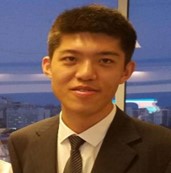 Ruiqi (Richie) Liu (S'14-M'20) received the B.S. and M.S. degree (with honors) in electronic engineering from the Department of Electronic Engineering, Tsinghua University in 2016 and 2019 respectively. He is now a master researcher in the wireless research institute of ZTE Corporation, responsible for long-term research as well as standardization. His main research interests include reconfigurable intelligent surfaces, integrated sensing and communication and wireless positioning. He is the author or co-author of several books and book chapters. He has participated in national key research projects as the researcher or research lead. During his 3-year service at 3GPP from 2019 to 2022, he has authored and submitted more than 500 technical documents with over 100 of them approved, and he served as the co-rapporteur of the work item (WI) on NR RRM enhancement and the feature lead of multiple features. He currently serves as the Vice Chair of ISG RIS in the ETSI. He actively participates in organizing committees, technical sessions, workshops, symposia and industry panels in IEEE conferences as the chair, organizer, moderator, panelist or invited speaker. He served as the guest editor for Digital Signal Processing and the lead guest editor for the special issue on 6G in IEEE OJCOMS. He serves as the Editor of ITU Journal of Future and Evolving Technologies (ITU J-FET) and the Associate Editor of IET Quantum Communication. He is the Standardization Officer for IEEE ComSoc ETI on reconfigurable intelligent surfaces (ETI-RIS) and the Standards Liaison Officer for IEEE ComSoc Signal Processing and Computing for Communications Technical Committee (SPCC-TC). He received the Outstanding Service Award from the SPCC-TC in 2022.
Ruiqi (Richie) Liu (S'14-M'20) received the B.S. and M.S. degree (with honors) in electronic engineering from the Department of Electronic Engineering, Tsinghua University in 2016 and 2019 respectively. He is now a master researcher in the wireless research institute of ZTE Corporation, responsible for long-term research as well as standardization. His main research interests include reconfigurable intelligent surfaces, integrated sensing and communication and wireless positioning. He is the author or co-author of several books and book chapters. He has participated in national key research projects as the researcher or research lead. During his 3-year service at 3GPP from 2019 to 2022, he has authored and submitted more than 500 technical documents with over 100 of them approved, and he served as the co-rapporteur of the work item (WI) on NR RRM enhancement and the feature lead of multiple features. He currently serves as the Vice Chair of ISG RIS in the ETSI. He actively participates in organizing committees, technical sessions, workshops, symposia and industry panels in IEEE conferences as the chair, organizer, moderator, panelist or invited speaker. He served as the guest editor for Digital Signal Processing and the lead guest editor for the special issue on 6G in IEEE OJCOMS. He serves as the Editor of ITU Journal of Future and Evolving Technologies (ITU J-FET) and the Associate Editor of IET Quantum Communication. He is the Standardization Officer for IEEE ComSoc ETI on reconfigurable intelligent surfaces (ETI-RIS) and the Standards Liaison Officer for IEEE ComSoc Signal Processing and Computing for Communications Technical Committee (SPCC-TC). He received the Outstanding Service Award from the SPCC-TC in 2022.
IP 3: 6G & evolving Edge/Cloud architecture
WEDNESDAY, DEC 6, 5.00 - 5:30 / LOCATION: Hall 8B
Presenter:
Udayan Mukherjee, Intel Corporation
Caroline Chan, Intel Corporation
Abstract
This session will discuss the evolution of radio access network to open, disaggregated and virtualized cloud native RAN. It will focus on the RAN networks today for 5G, current ecosystem landscape, and the evolution of true service based cloud architecture being prposed for 6G. It will also talk about the opportunities and challenges as well as how to address dynamic scalability of the network with the availability of multiple ecosystem options delivering the TCO benefits to end customer. The session with discuss some of newer use cases on the network beyond mobile broadband (industrial, NTN, IAB etc) and how the existing network is evolving to address these. The session will also touch on some of several evolving trends towards 6G and how cloud & AI native technologies and ubiquitous computing will play a crucial role going forward.
Biography:
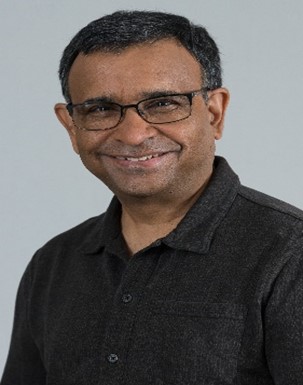 Udayan Mukherjee is the Intel Senior Fellow and Chief Architect of Wireless Network & distributed Edge Products for Intel. Udayan architected industry's first fully virtualized 5G infrastructure Software on open architecture through FlexRAN & FlexCore which are being deployed worldwide. He also leads the team driving Intel’s NextG network technology & 3GPP/ORAN standards development. Udayan has been deeply involved with IEEE, ORAN alliance and TIP/ Facebook, has been a keynote and distinguished speaker multiple times @ IEEE Globecom, IEEE WCNC, IEEE 5G Silicon Valley summits, IEEE NFIC, CTIA, GSMA, Cable Labs, ORAN Summits as well as FCC and other Global forums.
Udayan Mukherjee is the Intel Senior Fellow and Chief Architect of Wireless Network & distributed Edge Products for Intel. Udayan architected industry's first fully virtualized 5G infrastructure Software on open architecture through FlexRAN & FlexCore which are being deployed worldwide. He also leads the team driving Intel’s NextG network technology & 3GPP/ORAN standards development. Udayan has been deeply involved with IEEE, ORAN alliance and TIP/ Facebook, has been a keynote and distinguished speaker multiple times @ IEEE Globecom, IEEE WCNC, IEEE 5G Silicon Valley summits, IEEE NFIC, CTIA, GSMA, Cable Labs, ORAN Summits as well as FCC and other Global forums.
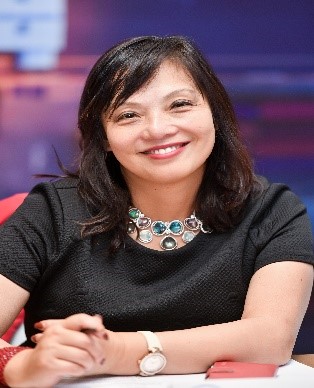 Caroline Chan is Intel’s Vice President and leads network incubation group addressing enterprise/Private Network. Caroline has also been a regular industry participant and been on Light Reading’s “the 5G 50 to watch” list as well as in the board of FB’s TIP project.
Caroline Chan is Intel’s Vice President and leads network incubation group addressing enterprise/Private Network. Caroline has also been a regular industry participant and been on Light Reading’s “the 5G 50 to watch” list as well as in the board of FB’s TIP project.
IP 4: Security for future networks: a standardization perspective
THURSDAY, DEC 7, 4.00 - 4:30 / LOCATION: Hall 8B
Presenter:
Leyi Zhang, ZTE Corporation
Abstract:
Quantum key distribution (QKD) is one of the major applications of quantum communications which provides the means to distribute symmetric random bit strings as a secure key that can be proven to be secure even against an eavesdropper with an unbounded computational ability. Its Information-Theoretically secure characteristic makes QKD a promising add-on technology to communication networks to provide unconditional security in 6G networks.
QKD has drawn a lot of attention in academia and fiber-based terrestrial QKD networks have reached significant maturity with the deployment of various test beds in various parts of the world. However, the introduction of QKD into current communication networks and cryptographic infrastructures brings challenges to the design of the network architecture and security considerations as well, since QKD technologies have their unique features and restrictions. Therefore, there is a strong need to establish standards regarding the use of QKD technologies in networks.
Several major regional and international standard development organizations (SDOs) are contributing to the standardization work, especially the European Telecommunications Standards Institute (ETSI) and the International Telecommunication Union (ITU)’s Telecommunication Standardization Sector (ITU-T). As a member of ITU-T SG17 and ETSI TC CYBER, our motivation is to introduce the latest standardization works of QKD in major SDOs. Hopefully, this will provide some guidance to theoretical and engineering practice and even open up new research directions.
There are many theoretical studies devoted to QKD, while in this proposed industry presentation, we will demonstrate the latest progresses in standardization for QKD. In the ETSI, an industry specification group (ISG) was established to address research and pre-standard issues related to QKD in 2008. So far, ISG-QKD has published a series of GRs and GSs, specifying details in QKD deployments, application interface design, optical component characterization and other related issues in previous study periods. ITU-T also starts the standardization activities of QKD in different study groups (SGs), while the architectures of QKD networks are studied in SG13 and the security issues are studied in SG17. Apart from the independent work within different SDOs, a Joint Coordination Activity (JCA) on QKD was set up to coordinate standardization work on QKD with SDOs like CEN/CENELEC FG
QT and JTC 22, CCSA-ST7, ETSI ISG QKD and TC CYBER, IEC SEG 14 and TC 86, IEEE P1913, IRTF QIRG, ISO/IEC JTC 1 SC27 and WG14, ITU-T SG11, SG13, SG15 and SG17. We will summarize standardization efforts in different organizations, such as ETSI, 3GPP, ITU and JCA-QKD, introduce the current progress on and plans for the development of QKD-related specifications or standards, and give insights on how QKD will eventually be standardized as a vital component of future networks.
Biography:
 Leyi Zhang received the B.S. and M.S. degree (with honors) in electronic engineering from the Department of Electronic Information Engineering, Beihang University. She is working as a researcher with the technology planning department of ZTE Corporation, responsible for long-term research as well as standardization. Her research interests include network security and quantum communication. She has many peer-reviewed publications. She took part in many international academic conferences as the session chair or invited speaker. She participated in national key research projects as the research assistant or researcher. She actively participates in global standardization activities through platforms such as ITU-T SG 17, ETSI and CCSA.
Leyi Zhang received the B.S. and M.S. degree (with honors) in electronic engineering from the Department of Electronic Information Engineering, Beihang University. She is working as a researcher with the technology planning department of ZTE Corporation, responsible for long-term research as well as standardization. Her research interests include network security and quantum communication. She has many peer-reviewed publications. She took part in many international academic conferences as the session chair or invited speaker. She participated in national key research projects as the research assistant or researcher. She actively participates in global standardization activities through platforms such as ITU-T SG 17, ETSI and CCSA.
IP 5: The New Wave of Open RAN
THURSDAY, DEC 7, 4.30 - 5:00 / LOCATION: Hall 8B
Presenter:
Dr. Slawomir Pietrzyk,
Founder and CEO at IS-Wireless
Abstract:
In our presentation we will outline the historical perspective of the evolution of cellular networks. We will address the key architectural changes and highlight elements which have been unchanged for decades. This will allow us to describe the bottlenecks of contemporary solutions influencing both contemporary and Open RAN Wave 1. We will formulate the Open RAN Wave 2 architecture and its main features. We will discuss the necessity to scale the network capacity through densification and the role of efficient use of resources such as spectrum and computing to remove the bottleneck of contemporary architectures. We will also discuss the universal nature of radio resource management in meeting various QoS goals and delivering a truly multi-service networking capability. We claim that Open RAN Wave 2 is the answer to the requirements imposed by ITU-2020 on 5G. It is quite likely that this view will be part of 6G, as history shows that a new generation of mobile systems tries to meet the unfulfilled promises of the previous one.
Biography:
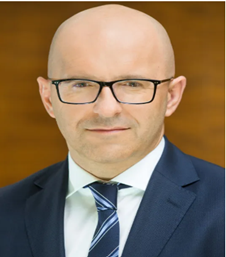 Slawomir Pietrzyk received the master’s Diploma degree in management from the Warsaw School of Economics and the Ph.D. degree from the Delft University of Technology, The Netherlands. Prior to IS-Wireless, he worked with the T-Mobile and Ubiquitous Communication Program, Delft University of Technology. He is the President and CEO with IS-Wireless and an expert in wireless technologies and the author of the first book on OFDMA, OFDMA for Broadband Wireless Access (Artech House, 2006).
Slawomir Pietrzyk received the master’s Diploma degree in management from the Warsaw School of Economics and the Ph.D. degree from the Delft University of Technology, The Netherlands. Prior to IS-Wireless, he worked with the T-Mobile and Ubiquitous Communication Program, Delft University of Technology. He is the President and CEO with IS-Wireless and an expert in wireless technologies and the author of the first book on OFDMA, OFDMA for Broadband Wireless Access (Artech House, 2006).
IP 6: Challenges and New Radio Access Technologies for Integrated Sensing and Communication
THURSDAY, DEC 7, 5.00 - 5:30 / LOCATION: Hall 8B
Presenter:
Jianglei Ma, Huawei Technologies Canada
Abstract
Integrated Sensing and Communication is an important new usage scenario for 6G. This presentation will first discuss the new challenges brought by ISAC and then the mutual influence between sensing and communication in wireless network. Finally, the potential new radio access technologies which can support communication and sensing dual functionalities effectively will be discussed.
Biography:
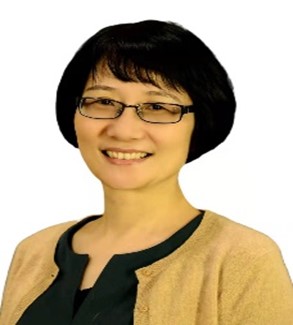
Dr. Jianglei Ma is a Technical VP based at Huawei Ottawa R&D Center. Her research area is advanced wireless access technologies. She has been actively contributed to 3GPP standards since LTE. She led NR air interface research and is currently leading 6G air interface research in Huawei. Prior to joining Huawei in 2009, she was in charge of LTE air interface research in Wireless Technology Lab at Nortel. Jianglei Ma was a visiting Associate Professor of Dept. of Electrical and Computer Engineering at the University of Illinois at Urbana-Champaign and a Professor of National Laboratory of Millimeter Waves & Dept. of Electronic Engineering in Southeast University. She has more than 350 granted patents.



